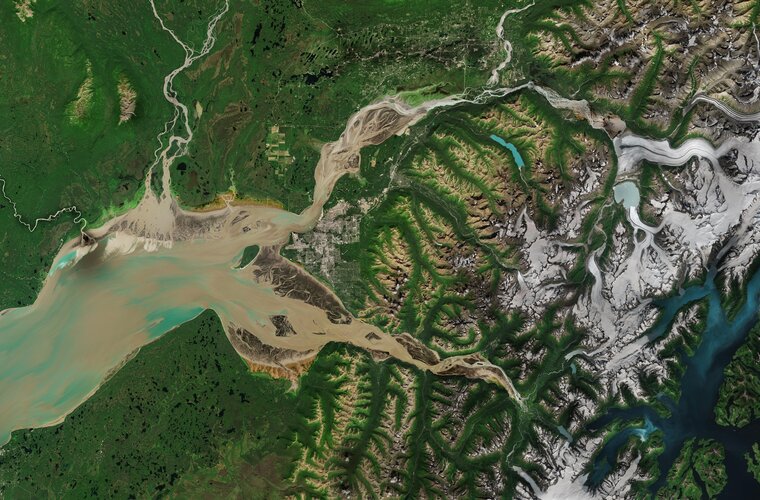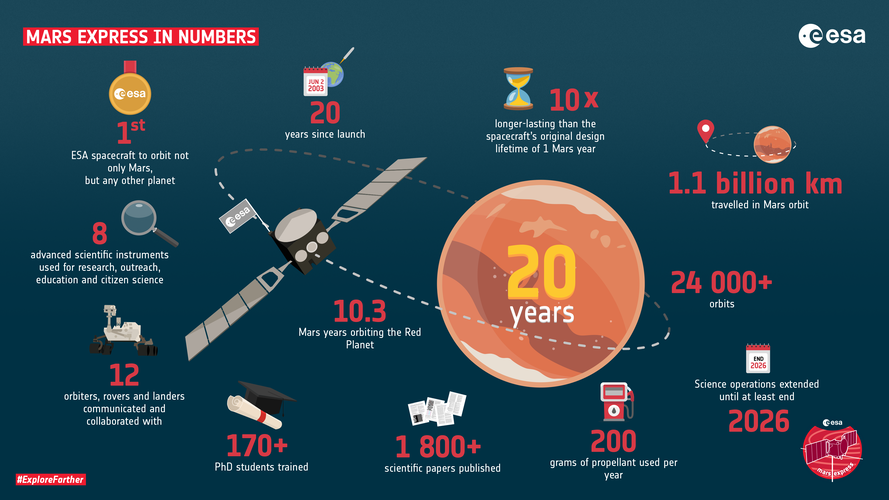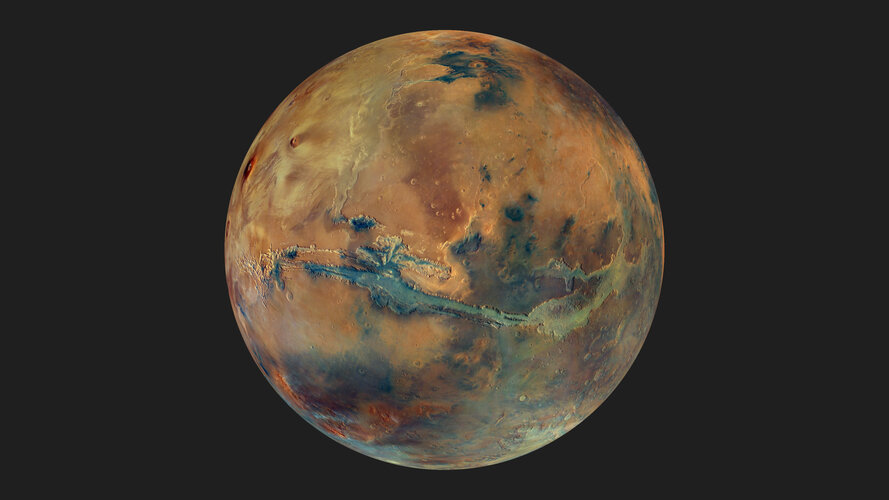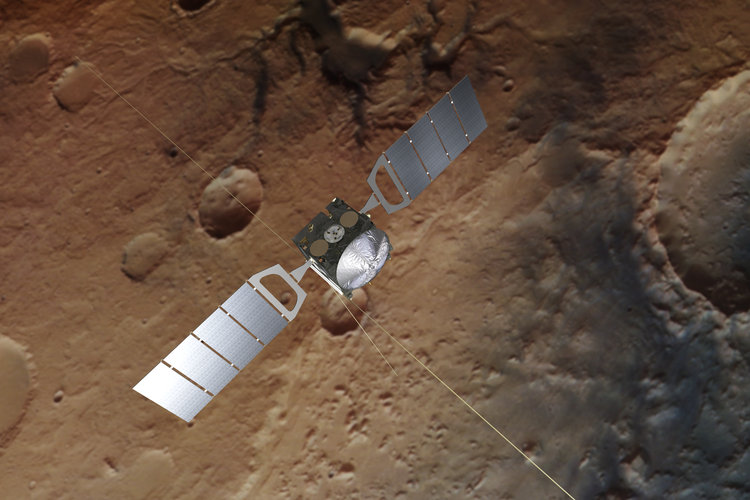
Copernical Team
Earth from Space: Anchorage, Alaska
 Image:
From the Chugach Mountains on the right to the Cook Inlet on the left, this Copernicus Sentinel-2 image features the varied landscape surrounding Anchorage, the largest and most populous city in the state of Alaska in the United States.
Image:
From the Chugach Mountains on the right to the Cook Inlet on the left, this Copernicus Sentinel-2 image features the varied landscape surrounding Anchorage, the largest and most populous city in the state of Alaska in the United States. NASA looks back at 50 years of gamma-ray burst science
 Fifty years ago, on June 1, 1973, astronomers around the world were introduced to a powerful and perplexing new phenomenon called GRBs (gamma-ray bursts). Today sensors on orbiting satellites like NASA's Swift and Fermi missions detect a GRB somewhere in the sky about once a day on average. Astronomers think the bursts arise from catastrophic occurrences involving stars in distant galaxies, even
Fifty years ago, on June 1, 1973, astronomers around the world were introduced to a powerful and perplexing new phenomenon called GRBs (gamma-ray bursts). Today sensors on orbiting satellites like NASA's Swift and Fermi missions detect a GRB somewhere in the sky about once a day on average. Astronomers think the bursts arise from catastrophic occurrences involving stars in distant galaxies, even Eventually everything will evaporate, not only black holes
 New theoretical research by Michael Wondrak, Walter van Suijlekom and Heino Falcke of Radboud University has shown that Stephen Hawking was right about black holes, although not completely.
Due to Hawking radiation, black holes will eventually evaporate, but the event horizon is not as crucial as had been believed. Gravity and the curvature of spacetime cause this radiation too. This means
New theoretical research by Michael Wondrak, Walter van Suijlekom and Heino Falcke of Radboud University has shown that Stephen Hawking was right about black holes, although not completely.
Due to Hawking radiation, black holes will eventually evaporate, but the event horizon is not as crucial as had been believed. Gravity and the curvature of spacetime cause this radiation too. This means Astrophysicists confirm the faintest galaxy ever seen in the early universe
 An international research team led by UCLA astrophysicists has confirmed the existence of the faintest galaxy ever seen in the early universe. The galaxy, called JD1, is one of the most distant identified to date, and it is typical of the kinds of galaxies that burned through the fog of hydrogen atoms left over from the Big Bang, letting light shine through the universe and shaping it into what
An international research team led by UCLA astrophysicists has confirmed the existence of the faintest galaxy ever seen in the early universe. The galaxy, called JD1, is one of the most distant identified to date, and it is typical of the kinds of galaxies that burned through the fog of hydrogen atoms left over from the Big Bang, letting light shine through the universe and shaping it into what Colorful Kuiper Belt puzzle solved by UH researchers
 The Kuiper Belt is a massive disk of icy bodies, including Pluto, that is located just outside of Neptune's orbit in our solar system. Objects observed in the Kuiper Belt exhibit a unique color range than any other solar system population ranging from white to dark reddish. While the source of this diversity in colors is unknown, scientists have speculated that it is likely the result of the pro
The Kuiper Belt is a massive disk of icy bodies, including Pluto, that is located just outside of Neptune's orbit in our solar system. Objects observed in the Kuiper Belt exhibit a unique color range than any other solar system population ranging from white to dark reddish. While the source of this diversity in colors is unknown, scientists have speculated that it is likely the result of the pro 20 years and counting: Mars Express in numbers
 Image:
20 years and counting: Mars Express in numbers
Image:
20 years and counting: Mars Express in numbers Webb peers behind bars
 Image:
Image:
A delicate tracery of dust and bright star clusters threads across this image from the NASA/ESA/CSA James Webb Space Telescope. The bright tendrils of gas and stars belong to the barred spiral galaxy NGC 5068, whose bright central bar is visible in the upper left of this image. NGC 5068 lies around 17 million light-years from Earth in the constellation Virgo.
This portrait of NGC 5068 is part of a campaign to create an astronomical treasure trove, a repository of observations of star formation in nearby galaxies. Previous gems from this collection can be seen here and here. These observations are particularly
20 years of Mars Express: Mars as never seen before

A new mosaic of Mars marks 20 years since the launch of ESA's Mars Express, and reveals the planet’s colour and composition in spectacular detail.
Mars Express milestones: two-year mission enters third decade

Boeing's first crewed space launch delayed, again
 Boeing has once again delayed the first crewed flight of its Starliner space capsule after discovering new technical issues, officials said Thursday.
The troubled CST-100 Starliner program has experienced numerous postponements but was finally meant to send humans on a test flight to the International Space Station on July 21.
During testing, Boeing engineers identified new issues relati
Boeing has once again delayed the first crewed flight of its Starliner space capsule after discovering new technical issues, officials said Thursday.
The troubled CST-100 Starliner program has experienced numerous postponements but was finally meant to send humans on a test flight to the International Space Station on July 21.
During testing, Boeing engineers identified new issues relati 
